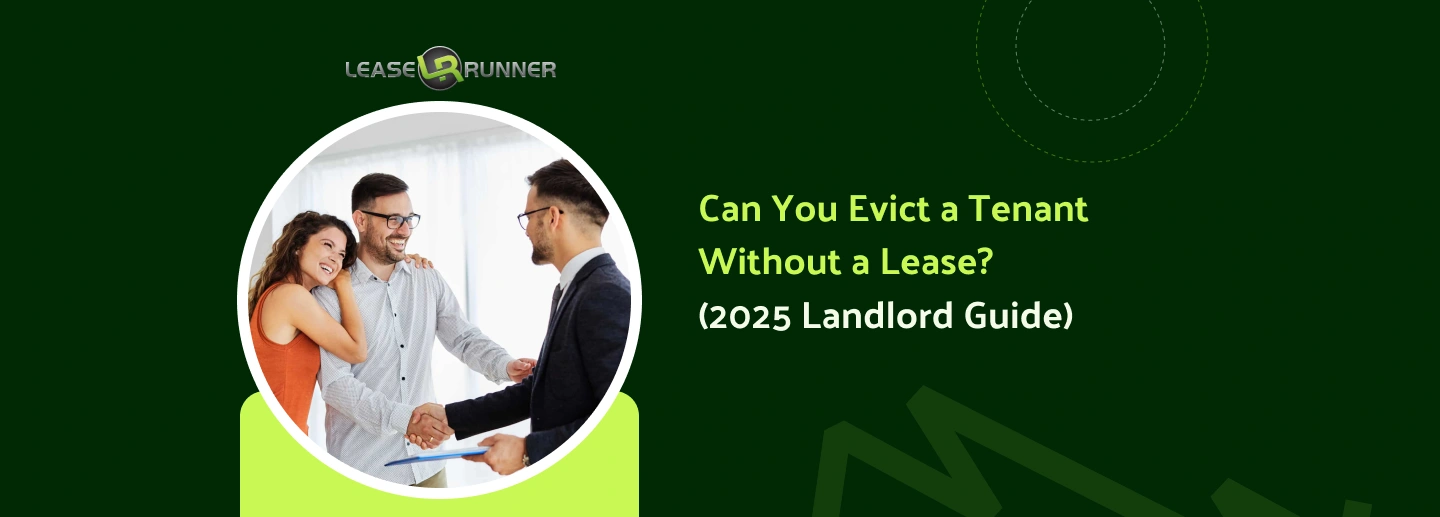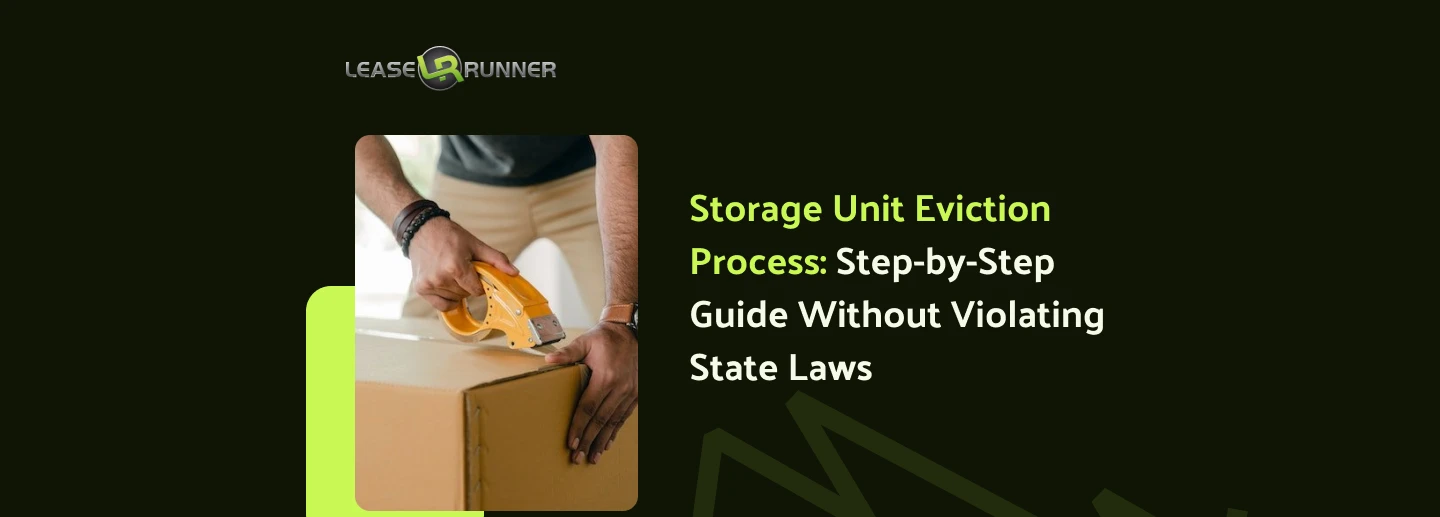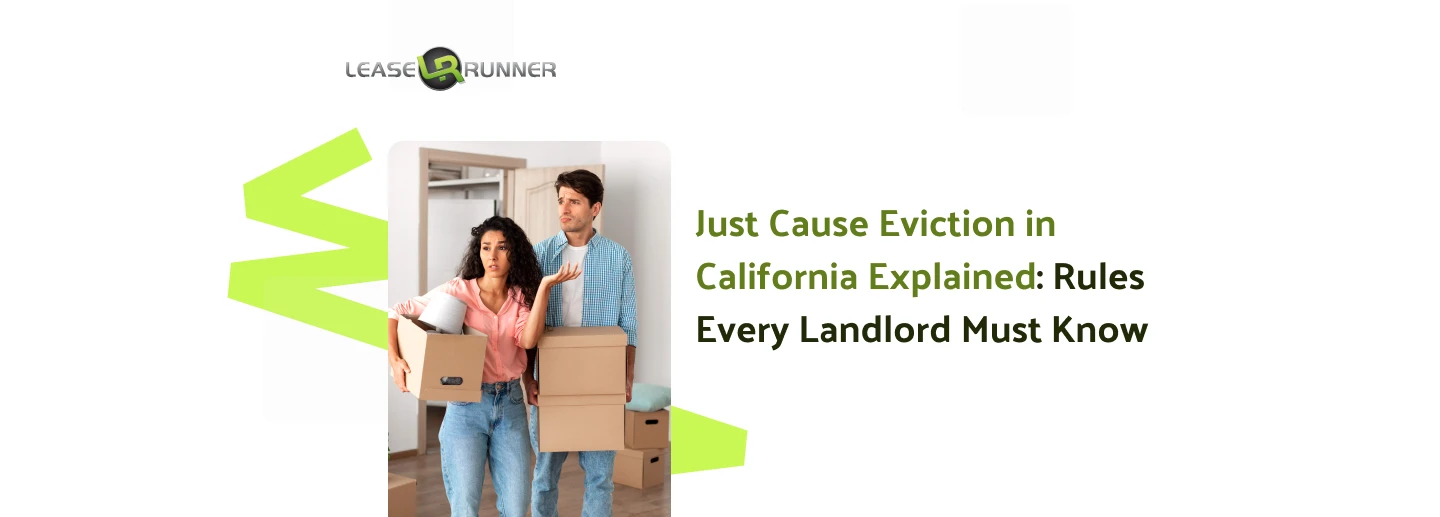
Can you evict a tenant without a lease? This question worries many property owners. The lack of a written agreement does not remove your rights as a landlord. If your tenant pays rent, overstays a prior lease, or lives there with your okay, you can evict—if you follow the law.
Courts see regular rent payments as proof of a rental agreement, even if it’s just oral. Rules change from state to state, but almost all require giving the correct notice before filing for eviction.
This guide explains every step of how to evict a tenant without a lease, how to issue a no-tenancy agreement notice template, and tips for protecting your investment. Whether you manage single-family homes or apartment units, knowing the law helps you avoid legal trouble and get your property back quickly.
Key Takeaway Table: Evicting Without a Lease
What Counts as Tenancy Without a Lease?
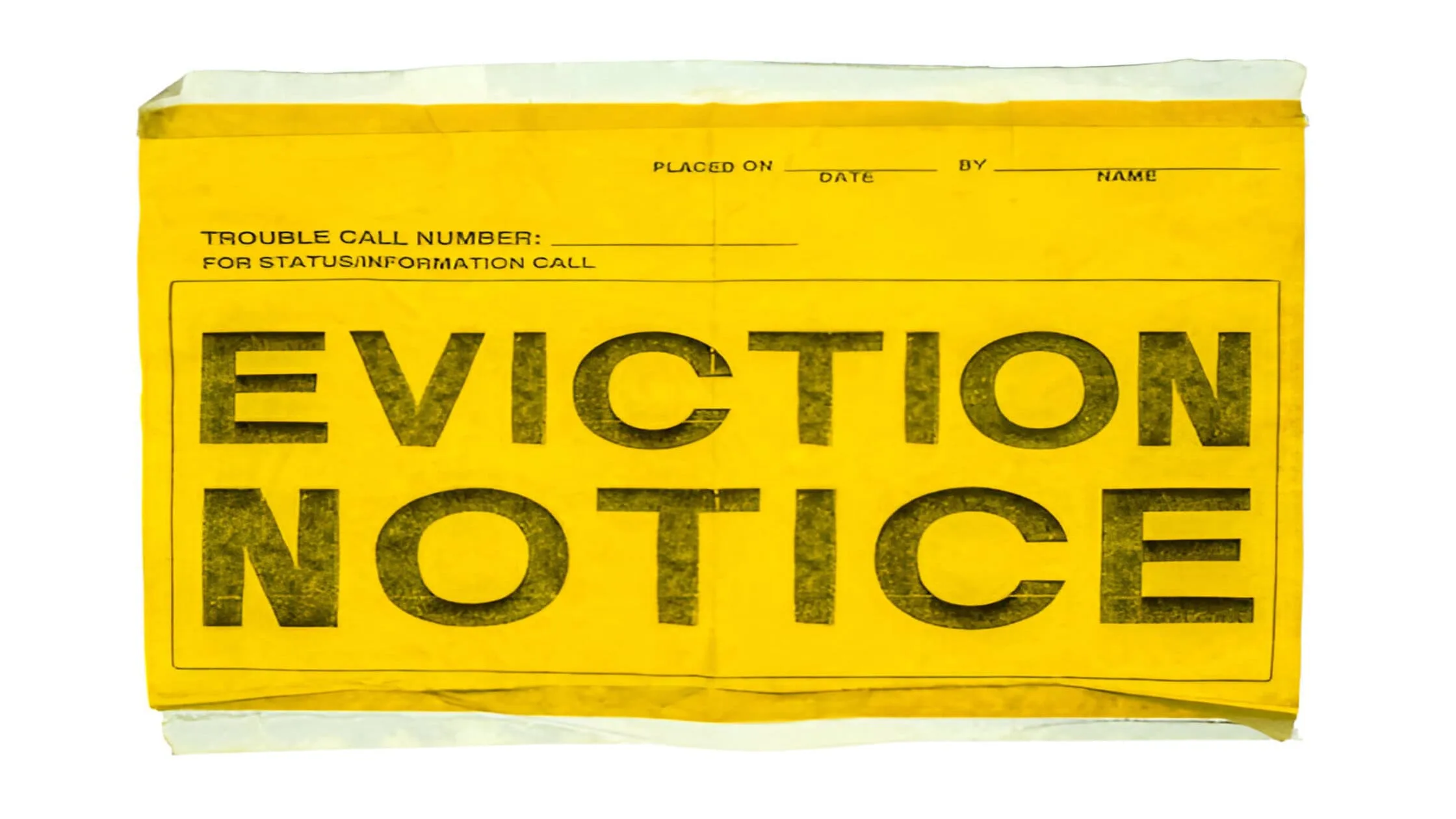
Understanding what qualifies as a tenancy without a lease is step one. Even if nothing is signed, courts often treat ongoing rental use as legal occupancy.
1. Verbal or Oral Rental Agreements
A rental deal made by word of mouth is legal in most states. You might agree on rent, property use, and terms, but nothing is on paper. If both sides act on these terms—by paying rent and providing housing- the landlord-tenant laws usually treat it as a valid rental agreement. Most evictions for oral agreements require the same notice as a written lease.
2. Month-to-Month Tenancy by Payment of Rent
When tenants pay rent but do not have a contractual lease, this is usually a month-to-month tenancy. The contract is renewed upon each payment of rent. Termination of this type of tenancy is simply a matter of giving the proper notice—most often 30 days—unless otherwise stated in your state.
3. Tenancy-at-Will or Holdover Tenants
A tenancy-at-will is if the tenant is present in your company, but without a written lease. For instance, when a lease expires and the tenant continues to stay, you receive their rent. It is also referred to as a holdover tenancy. Also, written notice is needed to evict such tenants, typically 30 or 60 days.
4. Implied Tenancy from Use of Property
Occasionally, someone will move into a building and pay rent, even without a written agreement. This is what the law terms an "implied tenancy." If you accept money, you're then legally obligated to treat them like a legitimate tenant. Same laws regarding eviction, just as with a normal renter—no messing around.
Can You Legally Evict a Tenant Without a Lease?
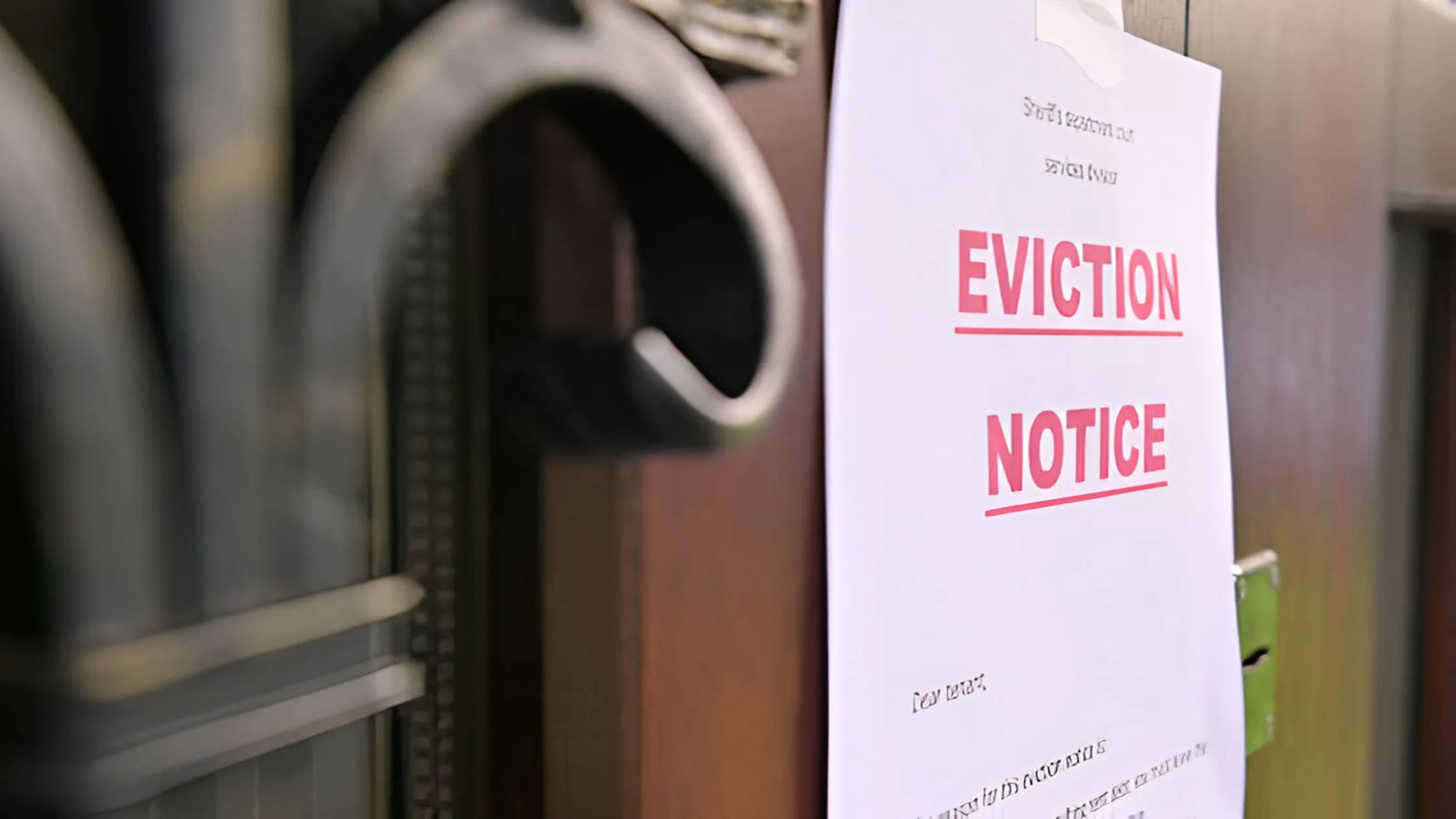
Yes, you can evict a tenant at will—provided you do it legally. Even if you never signed a lease agreement, you'll be held by the state to be a tenant by a typical occupant. The point is that you can't just lock out an individual. You must provide notice, allow the time to pass, and go through court action if necessary.
Common Legal Reasons to Evict a Tenant Without a Lease

Knowing the law is critical when asking, “Can you evict a tenant without a lease?”. The answer is no. Even with no formal paperwork, you must have a legal reason to evict a tenant. Here are the top causes and how to use each one with strong proof:
1. Failure to Pay Rent
Missing rent is the number one reason landlords want to evict. If you have a month-to-month deal, a spoken agreement, or even an implied arrangement from property use, late payments can end the tenancy. Most states let you serve a short notice—sometimes just a 7-day warning.
For example, if your tenant skips May’s rent and does not respond, you can serve a 7-day “pay or quit” notice. If there’s no payment or move-out after the deadline, you can then start the legal eviction. This is the heart of evicting a tenant without a lease for non-payment.
2. Lease or Verbal Agreement Violations
Rules matter, even without a written contract. If your tenant breaks house rules, like subletting, having pets when banned, or running a business from home, you can take action. Illegal acts or repeated noise are also grounds. Always serve a written breach notice first.
For instance, if noise complaints are frequent, record neighbor statements and log dates. If the tenant ignores the notice, begin by evicting a tenant without a lease by starting a court case with your records as evidence.
3. Property Damage or Nuisance
Big damage to walls, fixtures, or repeated fighting with neighbors lets you serve a notice. Take photos, get repair bills, and write down all events. In some states, you must let the tenant fix the problem first. If not repaired, or if the trouble continues, move forward with the court eviction.
4. Refusing to Leave After Notice
Even with strong reasons and a clear no-tenancy agreement served, some tenants simply stay. If you gave proper written notice and the tenant still refuses to vacate, this is called “holding over.” At this point, your only move is to file an unlawful detainer court action. The judge will check your notice and proof to decide.
No matter your reason, you must document every step and always use a written notice. For more notice template ideas, review our in-depth guide on how to write an eviction notice without a lease.
How Much Notice Do Landlords Have to Give a Tenant Without a Lease?
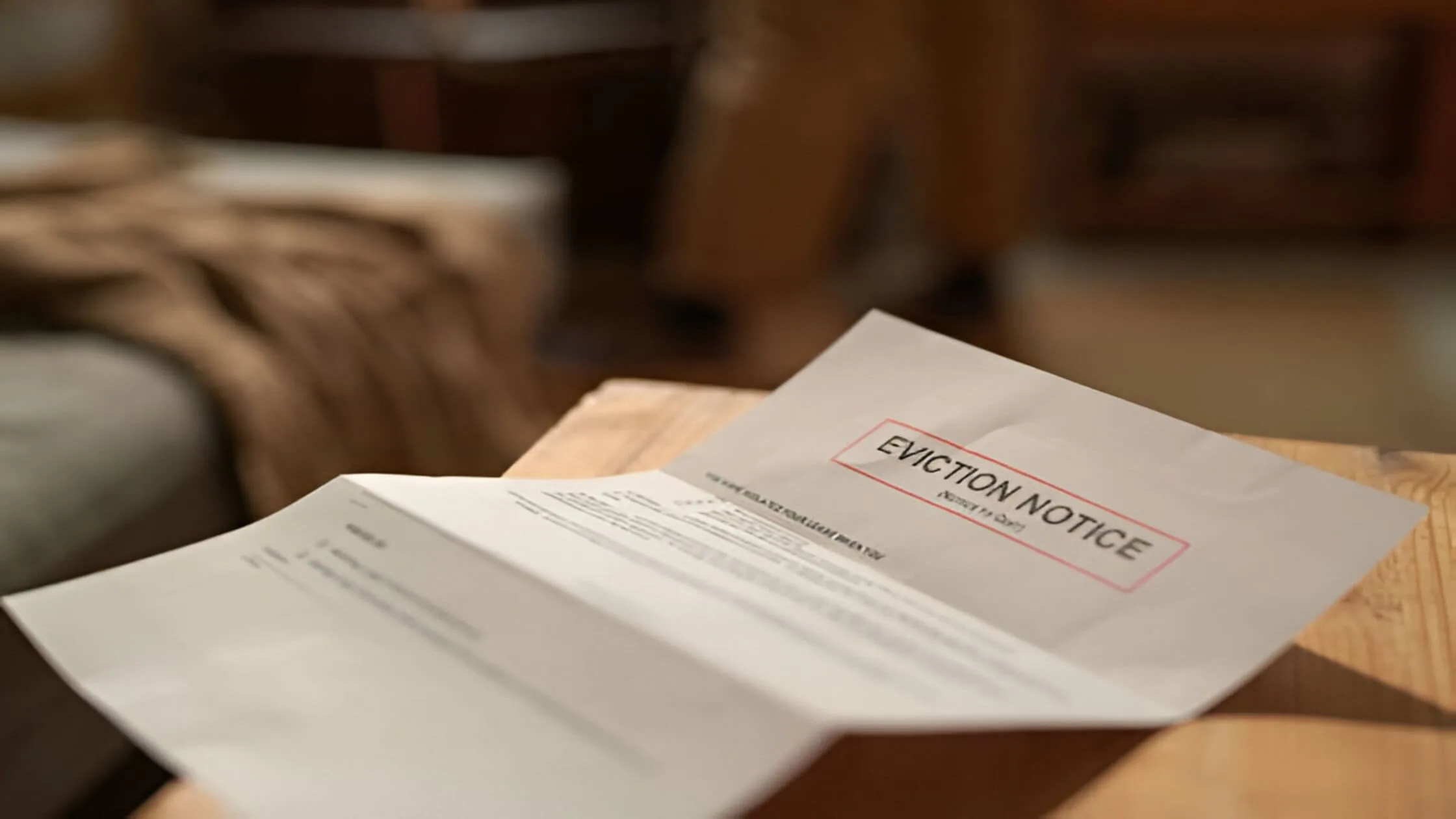
Giving the correct notice is critical when you start an eviction. You might be wondering, “Is it possible to remove a renter if there’s no formal lease agreement?” The answer is yes, you can evict a tenant even without a written lease, but you must strictly follow your state’s notice requirements at every step.
Just because there isn’t a signed contract doesn’t mean your rights as a landlord disappear. Here’s how to do the process right.
Standard 30‑Day Notice for Month‑to‑Month Tenancies
If you have a month-to-month renter and no written lease, most states make you serve a 30-day written notice. You need to list the tenant’s name, the property address, the exact move-out date, and the reason for leaving (if your state asks for one).
Be sure to sign and date the notice. Always document things, such as sending it certified mail or going personally to the tenant. This will protect you, and the court will be able to confirm that you did so legally if you have to later evict an at‑will tenant.
States With Shorter Notice Requirements (e.g., 7‑Day Notices)
Certain states allow you to provide a much shorter notice in specific situations. If the tenant is overdue on rent, for instance, some jurisdictions merely call for a 7‑day or 14‑day written notice. In cases involving criminal activity or extreme violation of the lease, the law might allow you to issue a quick notice to quit.
Always check the laws of your state before choosing an interval of time. Using a no-tenancy agreement with the correct time prevents mistakes.
Notice Requirements by Reason: Non‑Payment vs. Termination
The reason for eviction also comes into play:
- Non-payment: Notice can be 3, 5, 7, or even 14 days, depending on your state.
- Standard termination: Almost all states lean towards having 30 days for month-to-month tenancies, although it could be 60 days for more than a year of occupation.
Your notice should always include the legal language your state asks for. Needing help? Our eviction notice amount guide has free, attorney-approved templates. Using the right template and serving notice by the book is a key step in evicting a tenant without a lease—and keeps your case strong if you end up in court.
What Should Landlords Do If the Tenant Refuses to Leave After the Notice?

If the tenant ignores the notice period, do not resort to "self-help" (like changing locks). State law requires you to file in court. Go to your local courthouse and open an “unlawful detainer” action. You must prove you gave the correct notice, the time expired, and the tenant remains without your consent.
Document all communications. Be ready to show:
- A copy of the notice, date served, and delivery proof.
- Records of missed rent or property damage.
- Any written/verbal agreements or payment records.
Serving a correct notice and following up legally is the only way to evict and reclaim your property. Otherwise, you risk legal penalties.
The Step-by-Step Process to Evict a Tenant Without a Lease
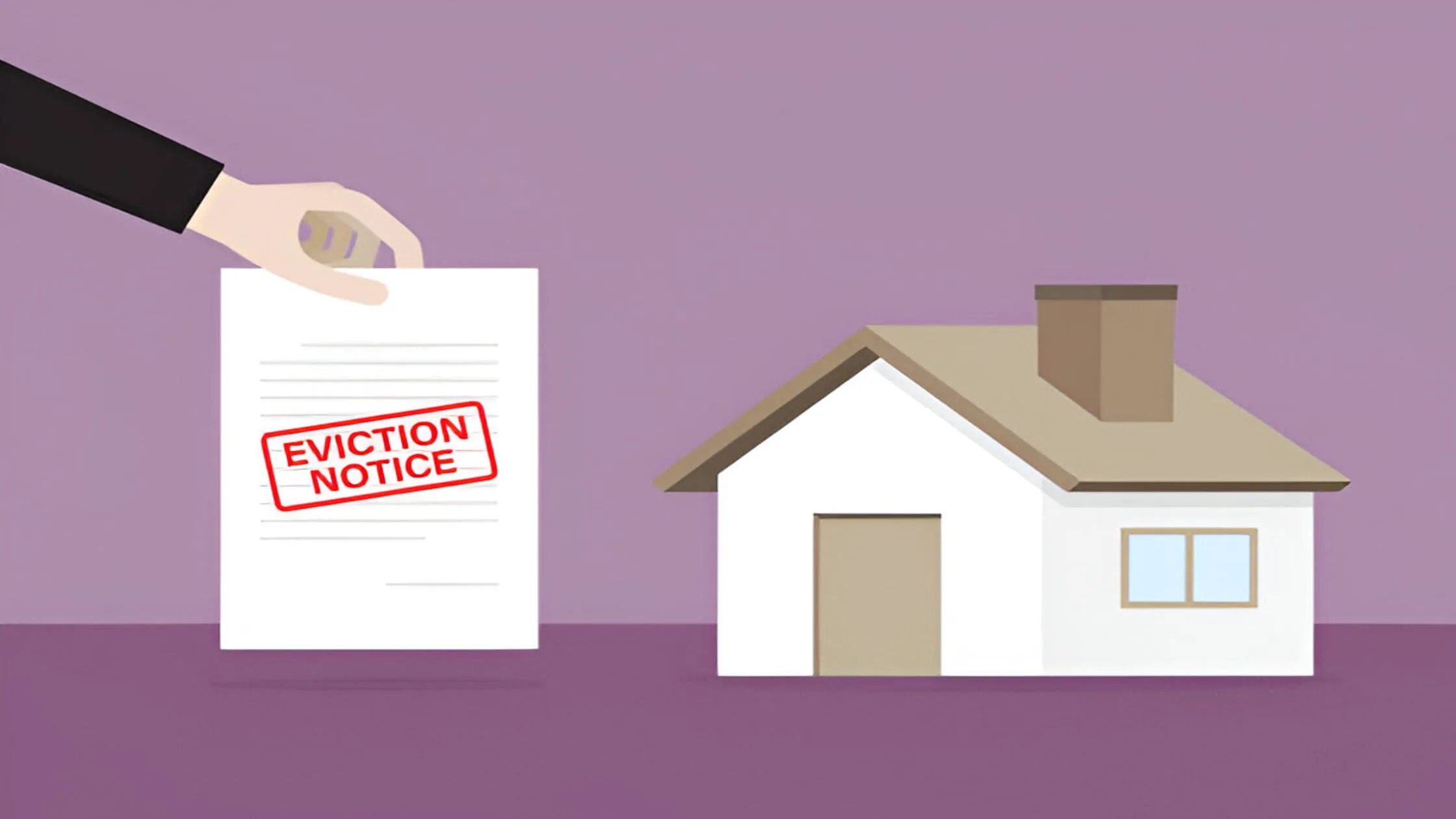
Evicting a tenant without a written contract must adhere to severe judicial requirements. If you miss any, your case may fail. Here's a clear method for landlords asking how to remove a renter without a contract.
Step 1 – Serve the Required Notice (30, 60 Days, or State Minimum)
Start with a written eviction notice. State laws usually require 30 days for a month-to-month renter without a lease. Some states allow 7 or 14 days—always check local rules. You can find a no-tenancy agreement template easily, or use our official eviction notice template for no-lease situations.
Include the property address, tenant name, deadline to leave, and why you are asking for removal (non-payment, nuisance, or just ending the tenancy). Always add your own contact info and the date served. Deliver it in person, by mail, or according to state requirements.
Step 2 – Wait for the Notice Period to Expire
You cannot remove a tenant or file with the court until the notice time runs out. For example, if you serve a 30-day notice on June 1, you must wait until July 1. If the tenant moves out, document the move with photos and a checklist. If they stay, the process continues.
Step 3 – File an Unlawful Detainer Lawsuit
If your tenant ignores the notice, you must go to court. File an unlawful detainer action (also called a “forcible entry and detainer” in some states). Bring the written notice, proof of delivery, and evidence for your reasons—like missed rent, complaints, or damage. There is always a filing fee.
Step 4 – Attend the Court Hearing
The court will schedule a hearing. Both you and your tenant appear in front of a judge. Bring payment records, lease copies (if any), your eviction notice without lease template, and all evidence. Stay professional and polite. The judge decides if you followed the law.
Step 5 – Get a Writ of Possession
If the judge rules for you, you receive a writ of possession. Take it to the sheriff or local law officers. They will evict the tenant and return your property to you—never try to lock out a tenant yourself.
This process explains how to evict a tenant without a lease and helps you avoid mistakes. For more, visit our linked guides and template pages.
How to Avoid No-Lease Tenancy Issues in the Future?

Avoiding no-lease tenancy problems is much easier than fixing them later. Use clear steps to make sure every rental starts right.
Step 1: Always Use a Written Lease
Never allow a new tenant to move in without a written lease. A signed agreement lists rent amounts, deposit rules, how to give notice, and what happens during an eviction. This paper is your main proof if you want to evict a tenant without a lease. Written leases stop confusion and protect both sides.
For easy lease drafting, check our guide to writing eviction notices and rental agreements. Even if you trust the tenant, a written lease stops future legal fights over rules.
Step 2: Require Rent Payment Records
Keep proof of every rent payment. Ask for receipts—even from family. Copy deposit slips, bank statements, or electronic payments so you always have a paper trail. These records make it clear who paid, how much, and when.
If you ever need to prove occupancy in court, these are the first documents judges will want. It helps answer how to evict a tenant without a lease or defend against claims that there was no tenancy.
Step 3: Use Tenant Screening Tools
Before signing anything, check each tenant’s background. Run credit checks and review past rentals. Use tenant eviction history services to avoid risky renters. These checks let you see if someone missed payments or was evicted before.
Good screening stops problem tenancies before they start, so you avoid asking how to evict a tenant without a lease later. Following the previous steps will make your rentals safer and keep eviction simple if it ever becomes needed.
Conclusion
Can you evict a tenant without a lease? Yes, if you follow every legal step. Even without a paper contract, oral agreements and regular rent qualify as a rental relationship in law. Serve the correct written notice, wait for the notice period, and go through court for eviction.
Using “No tenancy agreement, how much notice template” ensures the courts side with you, not the tenant. Avoid confusion by always signing written leases, maintaining thorough records, and using tenant screening tools from day one. Knowing how to evict a tenant without a lease keeps your investment safe and your rights strong in 2025 and beyond.
FAQs
Q1. Can you evict a tenant without a lease if they pay no rent?
Yes, you can evict a tenant who stops paying rent, even if there is no written lease. The law protects your right to reclaim your property. First, serve the tenant a written notice.
Most states ask for a 7-to-14-day notice for non-payment. For example, if a tenant has not paid rent for two weeks, you would serve a 7-day notice to vacate. If the tenant stays after the deadline, you then file for eviction in court. This is a key step in learning how to evict a tenant without a lease.
Q2. How do you evict a family member or squatter without a lease?
You must use the same legal process as with any tenant. Give a written notice – 30 days is common in most states. If the family member or squatter refuses to leave, you file an unlawful detainer lawsuit in court.
Even if no rent was paid, the law calls these "tenants-at-will." Following our ways to evict a tenant without a lease keeps every step legal and safe.
Q3. How to write an eviction notice without a lease?
Use clear and simple language. List the property address, tenant name, reason for eviction (such as unpaid rent or nuisance), move-out deadline, how the notice was given, and your contact details.
This helps prove that notice was clear and proper. See our template to write an eviction notice without a lease for more.
Q4. What paperwork helps prove a verbal tenancy in court?
Keep any rent receipts, cancelled checks, bank transfers, emails, or text messages about renting. Ask neighbors to confirm that the person lived and paid rent.
These records are proof in cases where there is no tenancy agreement or you want the court to see that there was a valid rental. This paperwork is critical when showing how to evict a tenant without a lease.
